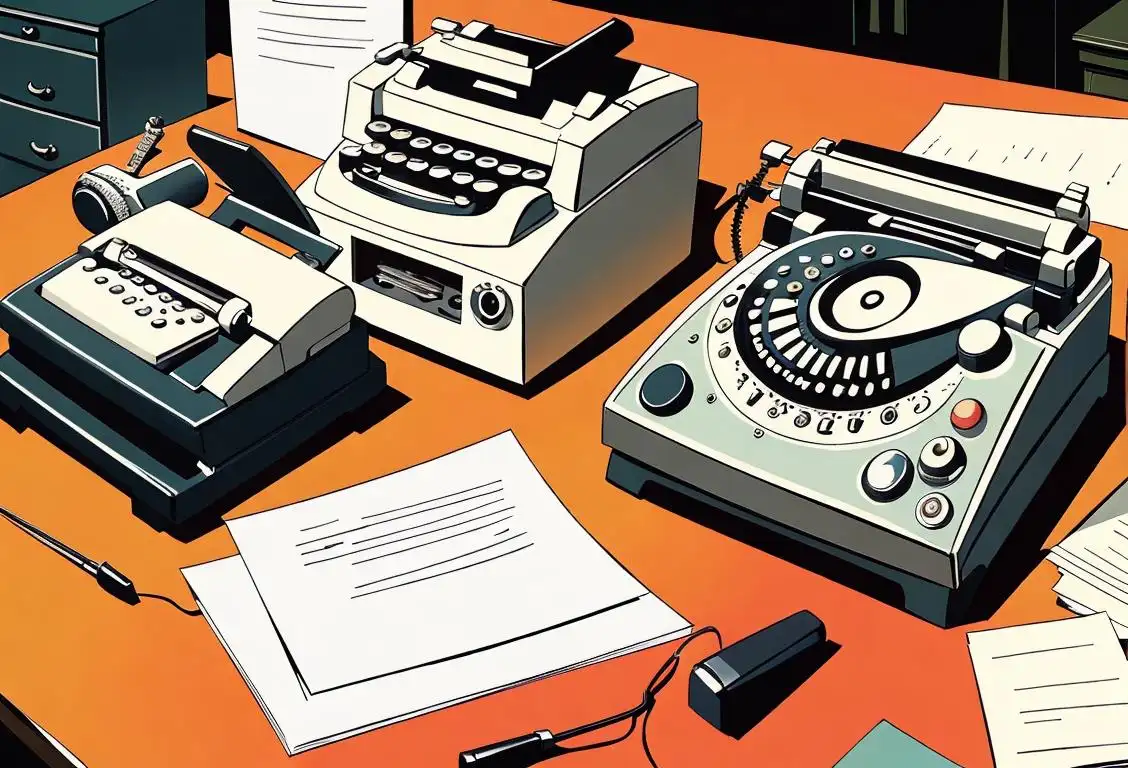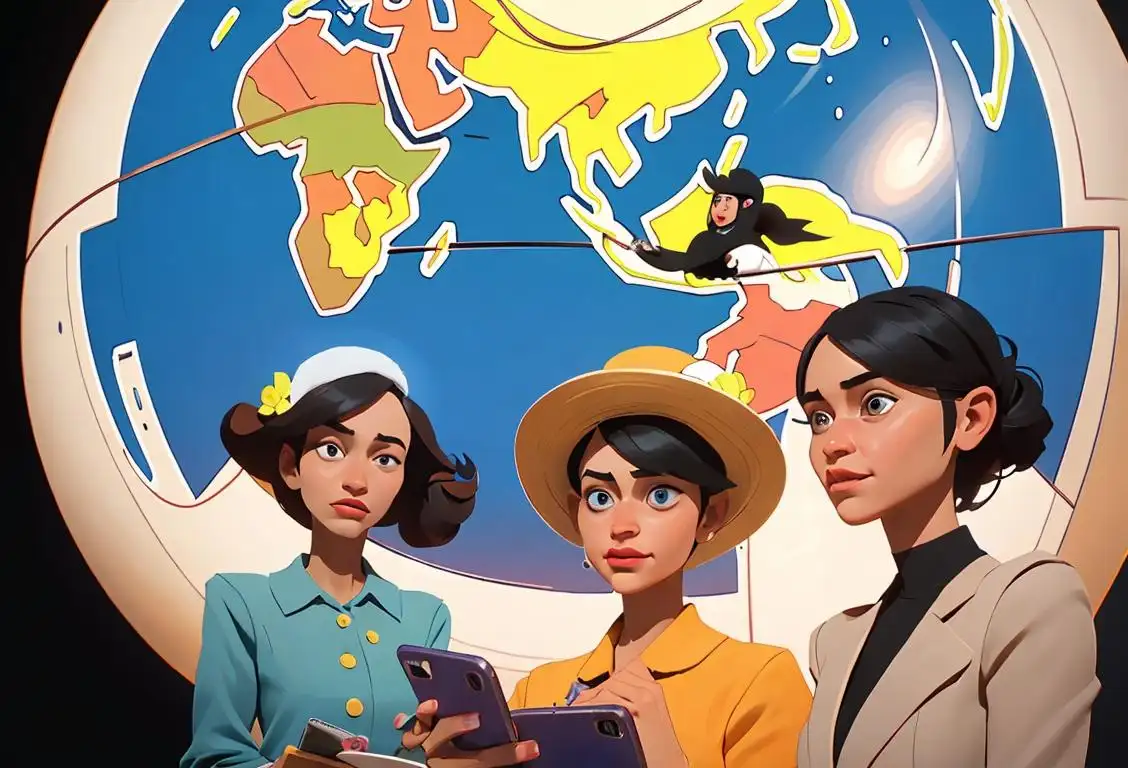National Telephone Day

Ah, National Telephone Day! A day to celebrate the marvelous invention that connects us with loved ones, helps us order food, and even allows us to listen to sports commentaries. Grab your phone and get ready for a fun-filled journey through the history of telephony!
When is Telephone Day?
It's national telephone day on the 25th April.
A Brief History of Telephony
Before we dive into the internet history of National Telephone Day, let's take a trip down memory lane to explore the origins of telephony. Back in the day, communication was limited to handwritten letters that took days or even weeks to reach their destinations. But thanks to the genius minds and relentless efforts of inventors, the telephone was born!
It all started with the invention of the telegraph, which allowed people to send messages over long distances using electrical signals. Great minds like Alexander Graham Bell and Elisha Gray took this concept even further and invented the first working telephones in the late 1800s. Yes, it was a time without emojis or cat videos, but it was a significant stepping stone in the world of communication.
The Internet Influence on Telephone
Now let's fast forward to the internet age, where we can't seem to put our phones down for more than a second. The advent of the internet has revolutionized telephony, making it accessible to billions of people around the world. Voice over Internet Protocol (VoIP) services like Skype and WhatsApp have made international calls a breeze, turning the world into a global village (minus the plane tickets and jet lag!). Who could have imagined video calls and instant messaging becoming a regular part of our lives?
Not only has the internet enhanced the way we communicate, but it has also opened up new possibilities for businesses and relationships. From online dating to virtual meetings, the phone has become an essential tool in various aspects of our lives.
Did You Know?
Did you know that the first ever phone call was made on March 10, 1876? Alexander Graham Bell, in his slightly nasal voice, uttered those famous words, 'Mr. Watson, come here. I want to see you.' And thus, the phone call was born!
History behind the term 'Telephone'
1844
First telegraph message sent
In 1844, Samuel Morse sent the first telegraph message over a wire 40 miles long. This marked a significant milestone in long-distance communication. The telegraph system used a series of electrical pulses to transmit messages, but it required trained operators and specialized equipment.
1861
Alexander Graham Bell born
Alexander Graham Bell, the inventor of the telephone, was born in 1847. Bell was an eminent scientist and teacher of the deaf. His interest in sound and speech communication led him to experiment with different devices, ultimately leading to the creation of the telephone.
1876
Bell patents the telephone
In 1876, Alexander Graham Bell was granted a patent for the telephone. This patent described the mechanism used to convert sound waves into electrical signals and vice versa, allowing for the transmission of voice over a wire. Bell's invention laid the foundation for the modern telephone we use today.
1877
First telephone exchange
In 1877, the first telephone exchange was established in Connecticut, USA. This allowed multiple telephones to be connected to a central switchboard, enabling individuals to make calls to each other without the need for a direct physical connection. The telephone exchange marked a significant leap forward in the accessibility and convenience of telephone communication.
1889
Rotary dial introduced
The rotary dial, a mechanical device for dialing telephone numbers, was introduced in 1889. Prior to the rotary dial, users had to rely on an operator to manually connect their calls. The introduction of the rotary dial added a level of convenience and independence to telephone users, allowing them to directly dial the desired number.
1965
Touch-tone technology invented
In 1965, engineers at Bell Labs invented touch-tone technology, which replaced the rotary dial with a keypad of push-buttons. Touch-tone phones used dual-tone multi-frequency (DTMF) signaling to transmit the numbers dialed. This innovation revolutionized telephone usage and paved the way for future advancements in telecommunications.
1983
First commercially available mobile phone
In 1983, Motorola released the first commercially available mobile phone, the Motorola DynaTAC 8000X. This device, while bulky by today's standards, marked the beginning of the mobile phone era. It was a significant step towards the widespread adoption of wireless communication and the eventual development of smartphones.
2007
Introduction of the iPhone
In 2007, Apple revolutionized the phone industry with the introduction of the iPhone. The iPhone combined a mobile phone, iPod, and internet communications into a single handheld device. This marked a turning point in the evolution of the telephone, opening up a whole new world of mobile applications and transforming the way we communicate.
Did you know?
Did you know that the first ever phone call was made on March 10, 1876?Tagged
loved ones communication technologyFirst identified
23rd April 2015Most mentioned on
25th April 2017Total mentions
1952Other days
Telephone Day
Fax Machine Day
World Emoji Day
Television A Historic Day
Traitors Remote Control Day
It Pro Day
Please Text Me Back Day
Internet Day
Landline Telephone Day
Emoji Game Day







